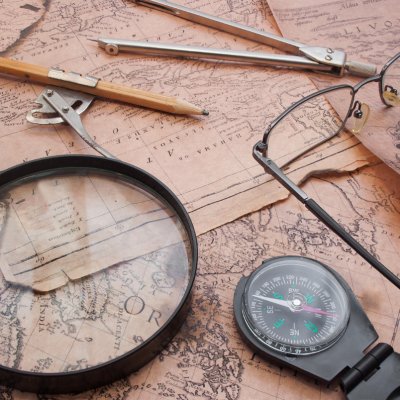I have always enjoyed learning from my patients. So, when the day came that a just-retired neurologist picked his way through my clinic’s front doors, I had big plans. As the oxycontin wore off and his face brightened, I began the work of persuading him to demonstrate a neurological exam to our staff. Coincidentally, I had been consuming everything possible related to the topic. I read a 50-page paper that promised to teach me how to do a neurological examination in 5 minutes. I watched videos of Abraham Verghese effortlessly sliding his smooth hands from the patella to the forefoot, and marveled at what a well-done physical examination could look like. I saw ballerinas holding form or violinists thrusting their elbows forward, and thought: why couldn’t we also strive for perfection?
The neurologist agreed to come to our usual Wednesday staff meeting. He shoveled a stool under his backside and grabbed my Queen Square reflex hammer. What happened next surprised me. He thrust the end from side to side in front of the patient’s face, far too close from what I’d learned, and then whacked the patella and Achilles tendons. His manual muscle testing consisted of one jerk at the elbows, wrists, and what seemed like a random assortment of other joints. Finally, he tested sensation by sweeping his hands once over the surface of my coworker’s legs, then turned around and said, “That’s it.”
I have to admit, I was disappointed. What I’d just observed was less thorough than a neurological examination I’d seen done by most physical therapy students, let alone a neurologist with many decades of experience. Before he started, I was literally holding my breath, expecting a maestro-like performance. Maybe I was expecting too much, but I left that day with a better understanding of our place in the system—and where the system might be failing its patients.
“By continuing to study, learn, and teach the physical examination, we are keeping a torch alive that has been neglected for decades by others.”
Two years later, after developing a flutter in my chest in the summer months, I decided to see a cardiologist. I knew the cause was most likely a combination of stress and 100-plus degree temperatures, not an actual cardiac condition. But, I thought, maybe I’d learn something. My blood pressure was taken with my feet dangling off the edge of a plinth, arm hanging by my side, back unsupported. I counted almost every cardinal rule of blood pressure assessment being broken. The cardiologist, who came highly recommended, placed his stethoscope over my t-shirt for what seemed like the blink of an eye, then declared himself done.
I am by no means the first to lament the fading art of the physical examination. In his essay, “The Lost Art of Clinical Skills,” Christopher Feddock describes how the advent of imaging and laboratory testing has led to erosion of clinical skills over more than a half-century in medicine.1 Abraham Verghese has also written on the topic.2 As physicians were un-learning these skills, however, physical therapists were learning them. Early reconstruction aides collected data for physicians but, by the late 1960s, most physical therapists reported almost always independently adjusting care plans based on their examination findings.3 What I realized after observing the neurologist and the cardiologist was that I, as a physical therapist, routinely did a better job examining those systems than they had.
Unfortunately, physical examinations haven’t simply become less skillful. In some cases, they aren’t being performed at all. A few weeks ago, a patient was referred with substantial muscle weakness and a suspected cervical radiculopathy. I knew that the neurological examination would be a critical component of the patient’s examination. If he had brachial neuritis, a self-limiting condition, the prognosis was good. If he had cervical radiculopathy and was truly as weak as the referral said (1 of 5 MMT for shoulder abduction), I knew the prognosis was not as good, and surgery might soon be indicated. Having received a note detailing a thorough physical exam, I apologized to the patient for having to repeat that process, but I needed to confirm that his presentation had not changed. “What examination?” He said, “No one else touched me or even watched me move.”
I would like to believe these experiences are rare, but research suggests that isn’t the case. Internal medicine interns report spending 12% of their time with patients and 40% of their time on the computer.4 The problem is that replacing face-to-face time with face-to-screen time can lead to important details being missed. In a 2015 survey study, 63% of oversights in diagnosis were due to not performing a physical examination, which led to missed or delayed diagnosis in 76% of cases.5 In other words, there are real-life consequences to the disappearance of the physical examination. Several diagnoses, from lumbar spinal stenosis, cervical myelopathy, cauda equina syndrome, Parkinson Disease, and others are clinical diagnoses, meaning the diagnosis is not made from imaging findings alone—it requires a physical examination.
Besides the tangible necessity of a physical examination for administering a diagnosis, it is also a ritual that communicates something important to the patient: you are being heard. Costanzo and Verghese have declared the physical examination “a skill of value beyond its diagnostic utility.”6 Physical examinations have been done for eons in a wide variety of cultures. By harnessing the power of that time-honored ritual, one can see it not just as a process to garner information, but an experience that strengthens the patient-provider relationship, which has a measurable impact on the outcome of treatment itself.7
In the past several years, a growing number of states have given physical therapists explicit imaging privileges.8 This includes my own state, Arizona. While we should welcome these new privileges, I believe that physical therapists should keep their attention squarely focused on the physical examination. While physicians and other healthcare providers have let their skills fade away in favor of advanced imaging and the like, physical therapists find themselves as one of the few that have maintained a focus on those fading skills. By continuing to study, learn, and teach the physical examination, we are keeping a torch alive that has been neglected for decades by others. As time moves on, that persistent focus on the physical examination should be maintained. Let us neither ignore the amazing opportunities offered by technology, nor get so dazzled by it that we lose sight of the tangible power of simply laying hands on our patients. As a clinician, developing skills over the course of years is rewarding. As a profession, it has slowly become one of our strengths. We have seen what happens to those that have undervalued the importance of a skillful physical examination. Let’s not make the same mistake.
References
1. Feddock CA. The lost art of clinical skills. Am J Med. 2007;120(4):374-378. doi:10.1016/j.amjmed.2007.01.023
2. Verghese A. Culture shock--patient as icon, icon as patient. N Engl J Med. 2008;359(26):2748-2751. doi:10.1056/NEJMp0807461
3. Worthingham CA. Study of basic physical therapy education: VI findings of the study in relation to trends in patient care and education. Phys Ther. 1970;50:1315-1332.
4. Block L, Habicht R, Wu AW, et al. In the wake of the 2003 and 2011 duty hour regulations, how do internal medicine interns spend their time? J Gen Intern Med. 2013;28(8):1042-1047.
5. Verghese A, Charlton B, Kassirer JP, Ramsey M, Ioannidis JP. Inadequacies of Physical Examination as a Cause of Medical Errors and Adverse Events: A Collection of Vignettes. Am J Med. 2015;128(12):1322-4.e3. doi:10.1016/j.amjmed.2015.06.004
6. Costanzo C, Verghese A. The physical examination as ritual: social sciences and embodiment in the context of the physical examination. Med Clin North Am. 2018;102(3):425-431. doi:10.1016/j.mcna.2017.12.004
7. Hall AM, Ferreira PH, Maher CG, Latimer J, Ferreira ML. The influence of the therapist-patient relationship on treatment outcome in physical rehabilitation: a systematic review. Phys Ther. 2010;90(8):1099-1110. doi:10.2522/ptj.20090245
8. Keil AP, Hazle C, Maurer A, et al. Referral for imaging in physical therapist practice: key recommendations for successful implementation. Phys Ther. 2021;101(3):pzab013. doi:10.1093/ptj/pzab013
The author declares no conflict of interest.
Author Bio:
Seth Peterson, PT, DPT is a physical therapist in Tucson, Arizona, where he runs a private practice. He is an Associate Editor of JOSPT Cases and has over 25 peer-reviewed publications. Seth's creative writing has also appeared on the pages of several literary magazines. Aside from clinical practice, he teaches with The Movement Brainery and A.T. Still University.

